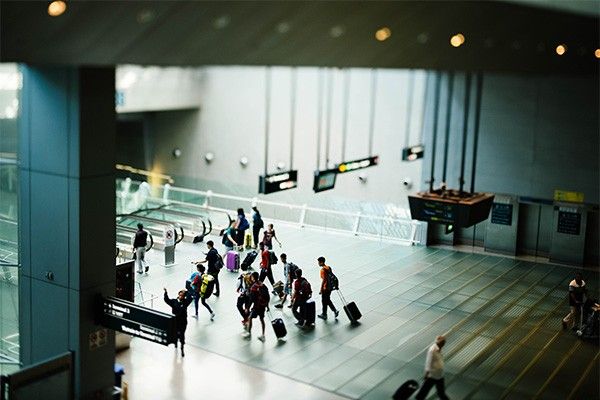Long lines, wait times, and public welfare

Long lines, wait times, and public welfare
June 24, 2022 | By Ricky Roet-Green
In a season of staffing shortages and high demand, security lines at airports are growing longer by the day. If you have not signed up for TSA PreCheck or a similar expedited service, you have probably considered it as you watched other travelers avoid the wait.
I fly to conferences at least four or five times a year. During my travels, I started thinking about the problem faced by airports in deciding how to allocate resources to programs like TSA PreCheck.
On one hand, the mission of these programs should be fairly straightforward: they exist to reduce overall congestion, not turn a profit. All enrollment fees are used to pay for expedited screening rather than collected as revenue.
On the other hand, there is tremendous flexibility in how these programs are implemented. Should an airport set up one TSA PreCheck security line, two, or six on any given day? Essentially, the airport must decide on how to split a fixed quantity of resources (in this case, a line that leads to a conveyor belt and metal detector and the staff members who are allocated to serve this line) between standard service and expedited service.
Because TSA doesn’t release enough public data to solve this problem with real numbers, I collaborated with Simon PhD student Aditya Shetty (who graduated this year) to build a theoretical model with several built-in assumptions: Security service is mandatory for everyone traveling by air, but customers can choose between two variants: standard and expedited. The expedited variant requires enrollment via fixed fee.
We then used this model to develop four key insights about the optimal way to set up an expedited service. These insights form the basis of a research paper entitled “On Designing a Socially Optimal Expedited Service and Its Impact on Individual Welfare,” which was published in Manufacturing & Service Operations Management in December 2021.
TSA PreCheck is worth joining for frequent flyers.
Every decision costs something. Using an expedited service costs $85 for a five-year membership, and travelers must spend time applying online and attending an in-person appointment that includes a background check and fingerprinting. Sticking with a standard service has different costs, like waking up earlier for a flight or missing out on work or leisure time in an airport lounge.
In our research, we found that customers should enroll in TSA PreCheck if their aggregate cost of waiting in the standard line is higher than their aggregate cost of waiting in the expedited line plus the enrollment fee. Equivalently, customers should enroll if the cost per unit time, times the number of times they travel per year, times the difference in waiting time between standard and expedited services is greater to or equal to the cost of enrollment. From that we learn that frequent flyers (who travel more per year) benefit more from enrolling in the expedited service.
TSA marketing supports this finding, noting on its website that it recommends membership for customers who plan to fly at least twice a year.
To decrease wait times for everyone, airports may need to devote more resources to expedited services.
After determining when it made sense for a traveler to enroll in the TSA PreCheck program, we turned our attention to resource allocation: How should a welfare-maximizing service provider (like an airport) allocate resources to an expedited service?
The model we created reveals four potential solutions:
-
No expedited service for anyone, only your standard security line. This could be optimal in a situation where lines are already short and it doesn’t make sense for anyone to pay for expedited service.
-
Expedited service for everyone. In this scenario, everyone would have to enroll in TSA PreCheck. This option is not realistic because TSA PreCheck is only available to U.S. citizens and permanent residents.
-
Keep standard security lines and allocate just enough resources to serve frequent flyers (those who travel at least twice a year) through an expedited program.
-
Devote more resources than needed to serve frequent flyers, making expedited service even faster
According to our model, in some scenarios, #4 can be the most effective solution for reducing overall congestion in an airport.
Devoting more resources to expedited services raises questions of fairness.
Inevitably, diverting resources from one program (standard service) to another program (expedited service) will raise some hackles. If an airport eliminates three lines from standard service and allocates them to expedited service, it may reduce overall congestion but increase waiting times for customers in the standard service lines.
We already see this play out in real life. According to the TSA, less than 10% of fliers in the United States are currently signed up for PreCheck even though these fliers account for half of the passenger volume. The TSA has faced criticism for PreCheck from fliers who are not part of the program, with the main concern being that the diversion of resources to PreCheck lines has increased wait time in standard lines.
There are ways to make things better for worse-off customers.
In the scenario where low-usage customers are worse off by diverting more resources to the expedited service, there are several options for improving their experience.
First, airports can reduce the enrollment fee of TSA PreCheck to make it more accessible to all. In our research, we find that this option will not make any difference, probably because it only serves those who already want to enroll.
Second, they can improve the efficiency of expedited service itself, whether it’s through streamlining the scanning process or conducting more thorough screening upon enrollment. Our model finds that when TSA PreCheck becomes more efficient, overall airport efficiency increases and congestion decreases in all lines.
While there are limitations of a theoretical model, it is a useful tool for understanding the opportunities and drawbacks of expedited service programs—and, hopefully, one that policymakers can use to benefit a greater number of people.

Ricky Roet-Green is an Associate Professor of Operations Management at Simon Business School.
Follow the Dean’s Corner blog for more expert commentary on timely topics in business, economics, policy, and management education. To view other blogs in this series, visit the Dean's Corner Main Page.
Add new comment